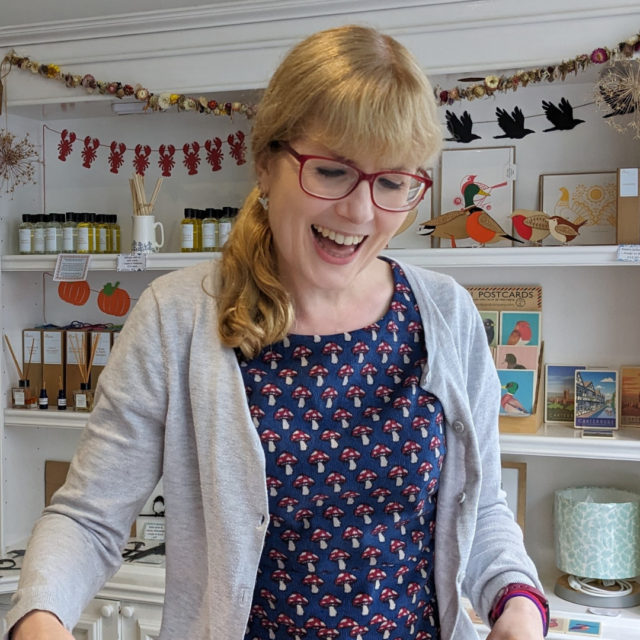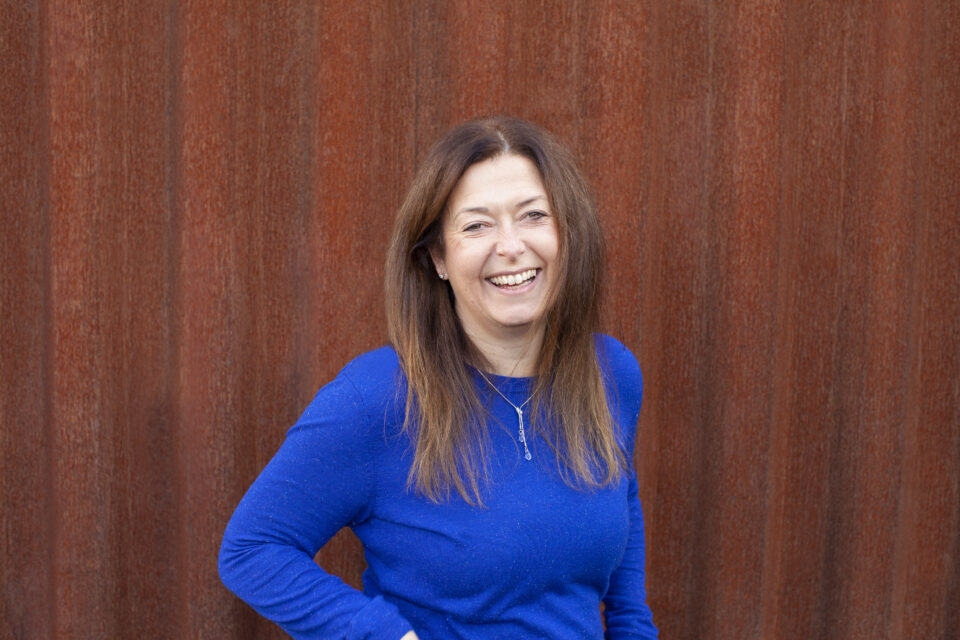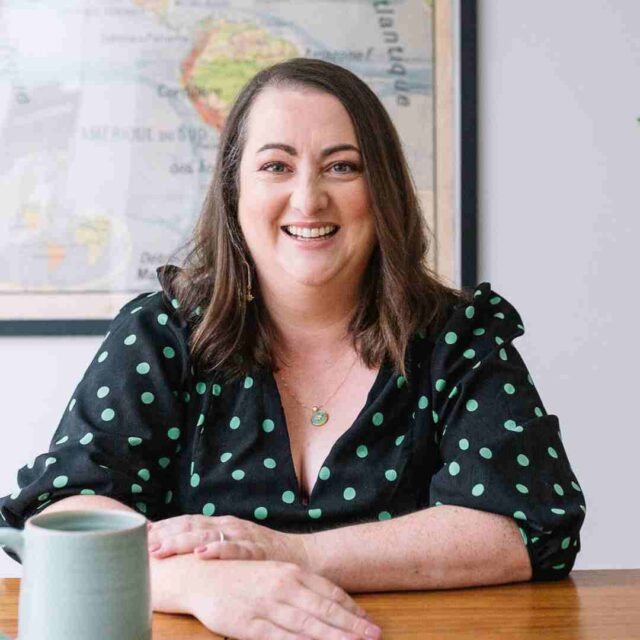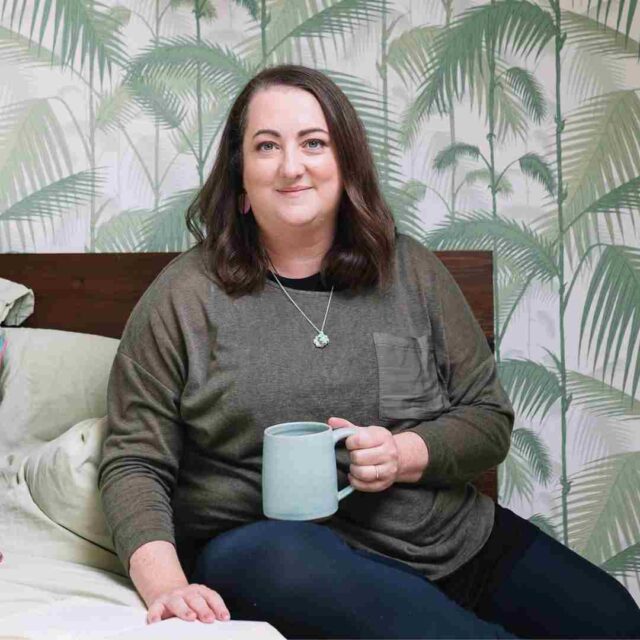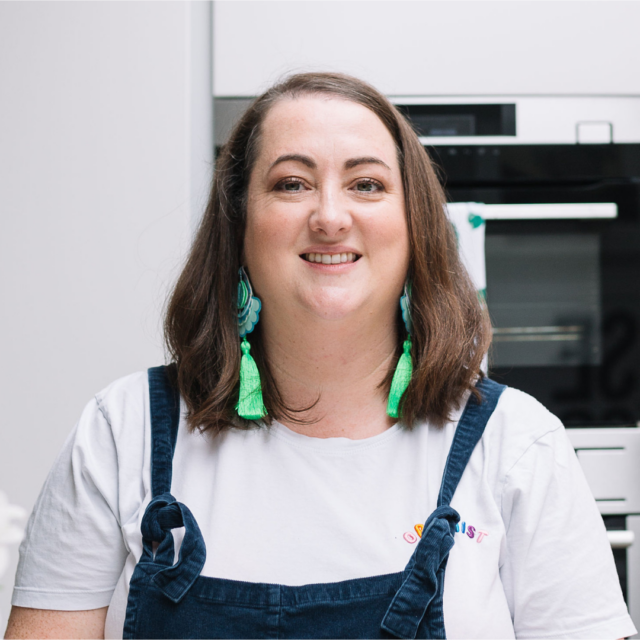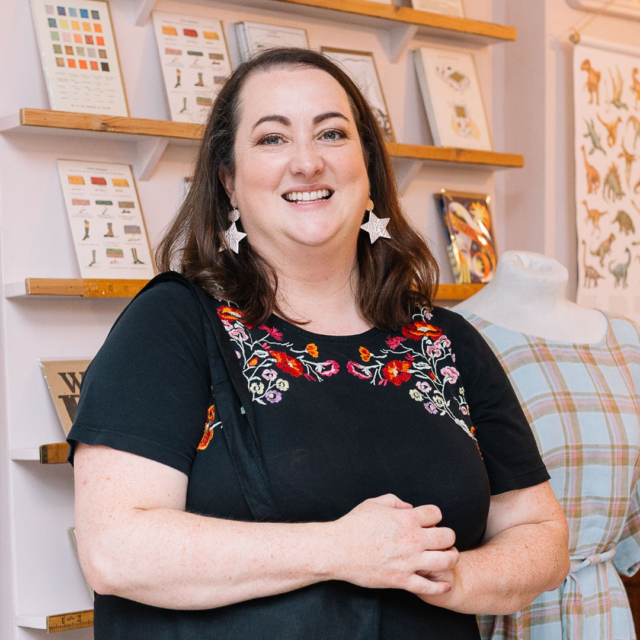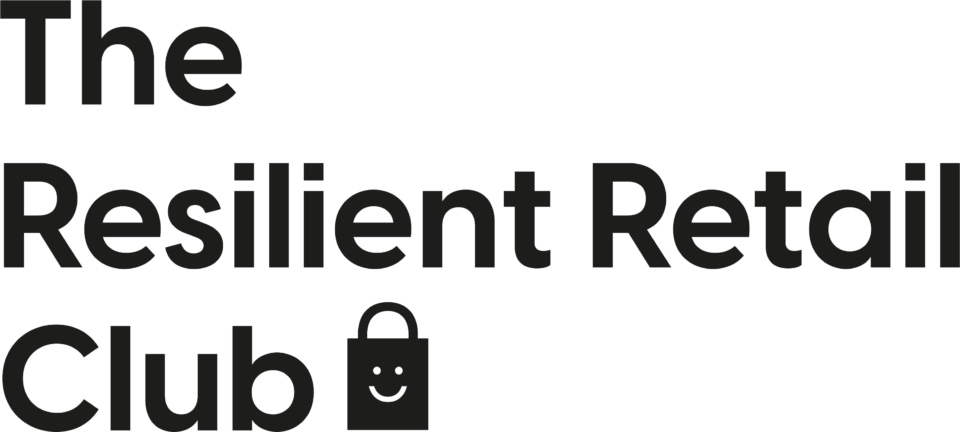Secrets to Successful Amazon Selling with Vicki Weinberg
Catherine Erdly: Have you ever thought about selling your products on Amazon? Or maybe you sell on another type of platform and are wondering how you can make your products and your brand stand out in the third party website. If so, then today’s episode is for you. I’m joined by Vicky Weinberg, who’s an expert in helping people sell on Amazon.
Welcome to the Resilient Retail Game Plan, a podcast for anyone wanting to start, grow or scale a profitable creative product business with me, Catherine Erdly. The Resilient Retail Game Plan is a podcast dedicated to one thing, breaking down the concepts and tools that I’ve gathered from 20 years in the retail industry.
and showing you how you can use them in your business. This is the real nuts and bolts of running a successful product business, broken down in an easy, accessible way. This is not a podcast about learning how to make your business look good. It’s the tools and techniques that will make you and your business feel good.
Confidently plan, launch and manage your products and feel in control of your sales numbers and cashflow to help you build a resilient retail business.
Meet Vicky Weinberg: Amazon Selling Expert
Catherine Erdly: Vicky, welcome to the podcast. Do you want to kick us off by introducing yourself?
Vicki Weinberg: Yeah, of course. Hi, Catherine. First of all, thank you so much for having me on the podcast. So I’m Vicky Weinberg and I help businesses sell their products on Amazon and I do two things, which is either I help businesses get off to a really good start because that’s really important and we’ll talk about that a bit more later.
And then I also work with businesses who are on Amazon already and perhaps just want to see an improvement in their sales.
Catherine Erdly: Fantastic.
Vicky’s Journey: From Baby Products to Amazon Consulting
Catherine Erdly: So you yourself got started selling on the platform. Can you share a little bit more about your story and your journey, how you ended up working with people on their Amazon?
Hmm.
Vicki Weinberg: Yes. So I think it was about eight years ago now, it feels like a long time ago anyway, that I launched my own brand of baby products which I don’t have anymore. But back then I launched that brand. I launched on Shopify and then I decided that I was going to also sell my products on Amazon. I think part of it was timing and part of it was maybe having time on my hands to play around, but I actually did really well on Amazon.
I learned a lot about the platform, how it works, how to best utilize it. And. I did really well on Amazon. I think probably most of my sales were coming from Amazon, hardly any through Shopify despite my best attempts. And I carried on doing that and then COVID happened and a lot of businesses, as you’ll know, was suddenly looking to get their products online.
And by that point, I’d had a blog for a little while. I was just in the process of launching my podcast. And so people were coming to me and saying, can you tell me how to sell on Amazon. I can’t work out this, or can you help me with that? And I’d already been doing a little bit of freelancing in that area.
Also I should say I had some production delays, which meant that I couldn’t sell anything once my product sold out. And so that really was how I accidentally ended up working with other businesses, selling their products on Amazon. So it was never really by design. It was Probably by chance, but I don’t regret it.
Can every product be sold successfully on Amazon?
Catherine Erdly: So when people come to you and they’re thinking about selling on Amazon, are there particular product types that you think, oh yes, that’ll do really well, or that’ll be a bit trickier, or is it fairly, do you think almost anything can sell? You know, They call it the everything store. Is that, is that your experience?
Vicki Weinberg: I do think almost anything can sell. To give you an example, I’ve been working with a client recently who sells urns for pets. You might not have thought about buying that on Amazon, but you can, and he does really well. I used to say that I didn’t think Amazon was great for handmade products.
And I still will say, I think Etsy is probably better for handmade products. However, I have a handmade client also doing really well on Amazon. I think it’s actually. I think most things can do well when it gets hard is if your product is completely original. So it’s something that’s so new that people don’t know what it is, what it’s for, never seen anything like it because it’s a big job to do to get people to find it in the first place and understand what it is and who it’s for.
And that’s not to say it’s impossible. But it’s hard, or if you have a product in a niche that’s really, really crowded, and you don’t really have a key point to differentiate your products from the other hundreds or maybe even thousands of products on there, if you see what I mean. So I used to sell baby towels, for example, and at the time my baby towel was quite unique, had a few features and made it really different.
But that same product today, I just don’t think I could compete. I don’t think I could compete on price. I don’t think I could compete on features. I just, I don’t think I could. So those are the two times when I would say. Maybe Amazon isn’t right. And actually the other thing I’ll mention is another time when Amazon might not be right is margin as well, because obviously if you’re selling on Shopify, you are paying a fee to have Shopify, maybe you’re paying for your domain and everything else or not even Shopify, anywhere you’re selling your own product, but on a third party, there’s obviously all those additional fees to take into accounts as well.
So if your margins are tiny, particularly at the beginning where you’re not making huge volumes of sales, perhaps, hopefully you are, but. Let’s be honest, not everyone gets started on a third party platform and makes hundreds of sales right away.
Catherine Erdly: Yeah.
Vicki Weinberg: Also a time when I might say, I don’t know what, that’s when I would suggest to a client, how do you have a real think about whether you want to, to go ahead with this or whether it’s the best option.
Catherine Erdly: Whether you’ll actually have any money left at the end of it. Amazon selling fees. They, they vary quite a lot. By category.
Vicki Weinberg: they do. So they vary by category. You pay a fee for having the account. So you pay a set fee every month for having the Amazon selling account. If you’re going for the paid version, which most people do, you then pay a fee on every product sold. And then if Amazon are doing your fulfillment. So if you’re offering prime shipping, you’re also paying Amazon to store your products and ship your products.
And all of that can add up. And something people always say to me, or how expensive is it? But It really, really varies. It varies on the product category. It varies on the size of your product. So I can’t give a definitive answer, but I will say if you go online and you type in FBA cost calculator, you can find this out really easily.
Catherine Erdly: Yeah. Yeah. Yeah. And the. We’ll come back to it. We’ll come back to FBA versus normal Amazon, but I guess what I was curious about, you mentioned there about what to do if you’ve got products that maybe you don’t have a point of difference. And I think that whenever you’re selling on a platform Whether that’s Amazon, whether it’s Etsy, whether it’s not on the high street, one of the hardest things is about differentiating yourself from the competition because, okay, yes, you don’t have to drive the traffic to the site.
You, you do have to drive the traffic to your own products, you’re benefiting from the fact that there are lots of people going to these websites, but you’re also then competing directly with people doing something similar. So what would be your top tips then for For a business that I guess they all need to stand out, but how would you go about doing that?
How to Maximize Your Amazon Listings
Vicki Weinberg: The first thing I would say is, so on Amazon specifically, is to use all of the features. So if you have a registered trademark for your brand, you can enroll in something called Amazon brand registry, which is completely free, and by doing that, you get access to lots of other features. So you can have an Amazon store.
You can have extra content on your listings. You can add videos. I would suggest doing all of this. As I say, it’s free. It’s going to take time, obviously, but it doesn’t cost you to have all of this. And if you look on Amazon now, if you just click on. Go onto Amazon and you search for anything at all, you will see that a lot of sellers are taking advantage of these features and their listings look a bit more professional, a bit more polished than those that don’t.
I definitely think that’s important. Like anywhere else, I think having really good product images are important, particularly your main product image, because as you’ve said, Catherine, when you search for something on Amazon, you get pages and pages of results. First thing is title and a picture.
So the picture has to really entice customers to actually click through to your product listing. And the title itself is important as well. So coming back to differentiating your product, I always advise sellers to be Really, really clear about how their product is different and almost spell it. Yeah, it sounds really silly, but almost spell it out.
To give an example, I was speaking to a brand recently who sells baby bibs and the different, the sort of coverall ones and the difference between theirs and others is theirs has two pockets rather than. The pocket, the baby’s like belly level, it also has a pocket higher up, so you don’t need to wear a separate bib over the top because you might have, I did this, my children have the coverall bib, and then one of these food catcher ones went over the top.
Catherine Erdly: Yeah.
Vicki Weinberg: Because of the design of hers, it meant that you only had to buy one thing, but they didn’t say that anywhere in the listing, and so my advice to her was, you have to, you have to tell people, you have to make it really clear. Clear you, you don’t want to skirt around and say, this is where you can say things like this is a unique design or whatever else, but actually tell people, tell people, if you buy this, you don’t have to buy something else, actually use those.
Maybe better words than that, but actually use the words as you make it really, really easy for someone to make the decision. Just absolutely spell everything out because you can have the best product. You have the best photos and everything else, but you just want to make it really easy to people to see, okay, this is where I should buy this.
And coming back to the product title, given that the people, people. See a picture and a title on the search page. Make sure that key information is in your title. If there’s something you really want people to know, it should be in your product title, whatever that thing is, because that’s making, the first thing is someone has to decide to click through to your listing.
Catherine Erdly: Yeah.
Vicki Weinberg: And if you can’t get them even to do that. Then, you can have the most well optimized, beautiful, written listing with lovely images. But the first thing is getting them to click through in the first place.
Catherine Erdly: Yeah. Yeah. Yeah. So make sure you’re spelling, spelling it out. I
Vicki Weinberg: Yeah, absolutely.
Catherine Erdly: guess it means you’ve got to be clear on that as well. What makes it unique?
Vicki Weinberg: Yeah. And I think, I do think a lot of people know what makes their product unique as well, but they maybe haven’t spelt it out. And I don’t know why I think lots of us do this. We not always, not always very good at selling or wanting to highlight. Aspects of what we do or what our products are, but I think it’s actually really important to just own it and say it as silly as that sounds.
Catherine Erdly: I think, no, I think that makes a lot of sense. And I think as well that the thing is, is that you can, so for example, the person with a bib, I feel like they could have spent, months probably perfecting this design and coming up with it. And they delved right into, why it’s this way and why they want to have the extra pocket and why it’s beneficial.
But it’s almost like it becomes so ingrained in your own head. That you don’t realize it’s not obvious to other people because it’s all you’ve thought about for several months. Yeah
Vicki Weinberg: think as well is that you can get, as you said, you get so close to a product that sometimes it helps just to put yourself in the position of the customer and answer the question. Why would someone choose to buy this? Why would I buy this one over that one? You almost have to answer that question.
In your, in your text, you always have to tell someone, this is why you want to buy mine versus this other one. And I should also say, because people often ask me about this as well, because there’s a lot of competition on Amazon, that’s where it helps with your pricing as well. Particularly if your product’s slightly premium and it’s priced a little bit higher than other products.
Customers, as we know, price is one factor they take into account. And if your product is slightly higher priced than maybe others in your category, I think it’s. Even more important for them to understand why so they can say, Oh, it might be two pounds more, but it’s because of this, or I might be spending more money on this product that I’m saving money because I, I won’t, it does two things.
I also don’t have to buy this other thing or whatever it is, but I think you have to make it a really easy decision for people.
Catherine Erdly: you think that also I often think you know if it’s about quality and it’s about durability people are Open to hearing that message that you know, yes, it’s This is a premium product and you’ll, it lasts, this many washes or this many years or this much use, you can pass it on. It’s not gonna, it’s not gonna break immediately.
That kind of thing.
Vicki Weinberg: Absolutely. I think that’s really important. I also think it’s important if your product is handmade or even if it’s made in the UK, I think that’s also something that’s important. I think it’s important to say you’re a small business if you are a small business, because there are lots of people who choose to buy from small businesses and you can get a small business badge on Amazon now.
And I think that’s definitely worth doing. And I also think that in your content, particularly if you. Apply for Amazon brand registry and you can have this additional content. It, Amazon do provide you space to talk about your brands and some brands shy away from that, particularly if they’re a very small business, but I actually would say do the opposite because I know if I look at a product listing and there’s a little bit about the founders and their background or why they’ve created the products or whatever it is, that’s going to stick in my mind so much more.
Then the generic version I’m much more likely to remember that brand, the first one, the one who’s actually told me a bit about themselves and I think that’s really important because Amazon is a bit of a faceless platform, isn’t it? Like I, the last say five things I brought on Amazon, I can’t tell you the brand for all of them.
Some I probably could, some I couldn’t because it’s just, someone says, where do you get that? And you say, Oh, Amazon, but what you really want is to be able to say, I got this on Amazon. And actually this is the brand because I remember what the brand was because it was really clear to me.
Catherine Erdly: Yeah. Yeah, yeah. So have a presence. Don’t be afraid to show your personality. Don’t be afraid to talk about the fact that you’re a small business. Be really clear on why your products unique and make sure that you’re shouting about that to get them into the listing.
Considerations Before Selling on Amazon
Catherine Erdly: So we’ve talked about standing out, but what other considerations do people have when it comes to trying to grow on a selling platform?
Vicki Weinberg: We’re talking about Amazon in particular, I think the first thing is to come back to what I said right at the beginning, actually, is to think about whether you want to. Sell your products on Amazon, grow on Amazon, and the reason I say that isn’t to be negative, of course I, I help people sell their products on Amazon, however.
I do want to be really clear about what’s involved in it. It might not be for everyone. So I would say before you think I’m going to sell my products on Amazon because I need to be on Amazon. Everyone’s on Amazon. I would just take a minute and think, okay, what does that mean to me? Does it work for my margins?
Does the fulfillment work for me? Do I have the time to invest to get in my listings, my store to a really good standard as I’ve just outlined, do I have really great product photography all of these things I would definitely say, first of all, think it through before thinking that I have to be there because you don’t have to be there.
do think it’s a good place to sell your products. However, you don’t have to be anywhere. And I think it’s really important to think about whether you want to invest the time, the money, the resources. Before you get started, because I’ll be really honest. Amazon is a bit of a time suck.
It’s not an easy platform to navigate and to work with.
Catherine Erdly: That’s definitely overwhelming feedback I hear from people is that it’s like the learning curve is steep.
Vicki Weinberg: it is and everything takes twice as long as it should. And things, can go wrong, do go wrong. And while I say all of this as someone who thinks it’s a great place to be, but I just, I always want to be really honest about this because I think you have to want to sell your products on Amazon and know why you’re doing it as well.
Catherine Erdly: Yeah.
Vicki Weinberg: Before you even get started. So I think that’s one thing. And as I said as well, have a good look at the fees. So you’re really clear on that as well, because you don’t want to get a nasty surprise down the line when you realize, Oh, actually I’m only making a couple of pence per product after Amazon takeout. All of this. So have a really good look into it. And then if it’s something you do want to do, I would have a look at the market that you’re going to be going into. So have a look at other products in your category, get a feel for what they’re doing how they’re pricing their products, how they’re fulfilling their products, what their listings look like, and just get a sense of where your product’s going to fit in.
I think that’s a really useful thing to do, but I think the main thing is knowing that you want to be on Amazon and also knowing why. So there are different reasons people go on Amazon. Some sellers go on there because they want to have a presence. So they’re not concerned on Amazon being a big part of their business, but they want to get their products on Amazon before someone else gets their products onto Amazon.
Because that does happen, particularly if you wholesale it shouldn’t happen without your permission, but it does. So you don’t want, if someone else lists your products on Amazon, you’ve got no control over the branding, the pricing, any of it. So some businesses choose to have a presence on there, not make it a big part of what they do, but just to get on there, to have that control.
Catherine Erdly: Yeah.
Vicki Weinberg: Others really want to grow the Amazon side of their business. And then of Everything in between, but I think knowing what you want out of Amazon is really important as well, because then that will also determine how much time and effort and money and energy and everything else we’ve spoken about you put into it.
Catherine Erdly: Yeah. No, that’s a great point. Yeah. Being really clear on what your motivations are. And can you talk us through a little bit because there’s lots of different options on Amazon, aren’t there?
Understanding Amazon Fulfillment Options
Catherine Erdly: In terms of the fulfillment piece, can you just talk us through the, the FBA fulfilled by Amazon and the pros and cons?
Vicki Weinberg: Yeah, absolutely. Because there’s actually three fulfillment methods on Amazon. People think there are two, but there are actually three. So the first is you doing your own fulfillment. So your products are on Amazon, but you’re fulfilling the orders as you would from your website or anywhere else.
And then FBA fulfilled by Amazon basically means you send your products into an Amazon warehouse and they store them and ship them out to customers for you. Usually next day or sometimes even same day, depending. Tending when in the country you live, the third option, which I will touch on just because people don’t know it exists is called seller fulfilled prime, which means if you can dispatch your products as quickly as Amazon can, so if you can get at things out the same day and have them delivered next day, you can apply for what’s called seller fulfilled prime, where you still get the prime badge on all of your products.
The customers don’t actually realize it’s actually coming from your warehouse, not Amazon’s. So that’s the third option as well. But most people. Go for FBM, which is fill in all to yourself or FBA. And the other thing about FBA to mention is that it means that if you were to, if you wanted to sell from your UK Amazon site to Europe, as an example, Amazon would take care of all that shipping and things for you.
Of course, they’re going to charge you for the privilege, but it can be a nice way to sell your products and other marketplaces without having to worry about export paperwork and. Fees and that kind of thing.
Catherine Erdly: Yeah. Okay. And yeah, it’s interesting. You mentioned that and the prime and basically the prime badge gives you access to the, the Amazon prime members, which I presume are the biggest spenders on Amazon. Right.
Vicki Weinberg: Most people nowadays have prime and something I’ll think is worth mentioning is if for some reason you decide not to do prime, so maybe your products are really big. So send them in for Amazon’s fulfillment, it would cost you a fortune. In storage fees, or maybe they’re very fragile and actually you want to keep control of that process.
If that, whatever the reason is, you decide to fill your own products. I always recommend offering free shipping, even if that means adding a little bit to your product costs to get the illusion free shipping. And yeah, reason for that is, is that if you don’t do that. Then Amazon will obviously charge customers for shipping and that can actually put people off. you, if you don’t have prime, I didn’t actually realize this until it happened to me as a seller. Amazon was charging someone 4. 50 delivery for my products, which were only cost, I think, like 15 at the time or something. No one, no one was going to, By that way, let’s face it, or very few when compared to all the prime options.
So if you don’t want to do prime for whatever reason, that’s absolutely fine. You don’t have to, but I would definitely think about your shipping costs. I saw someone recently who was selling a nine 99 book and the shipping was four pound 50. And I just thought. No one’s, no one’s going to buy that. Why, why would you say no one?
That’s been very negative. Few, few people will buy that when they can get something perhaps quite similar and get it next day and not pay for the shipping
Catherine Erdly: Yeah, yeah, yeah.
Expanding Internationally with Amazon
Catherine Erdly: No, that makes a lot of sense and you mentioned there about international shipping. And I think that is a question that comes up fairly often with my clients is this idea about expanding internationally and looking into new markets and once you’ve got up and running with Amazon UK, do you have to start again from scratch if you wanted to?
For example, let’s say you really wanted to push your European sales and you thought I’ll see if I can get some stock into FBA in Europe, for example, or in the U S or in Australia or somewhere like that. How easy achievable is that? Yeah.
Vicki Weinberg: I should also say you don’t have to start in the UK as well. So I work with clients who just sell in the U S for example, or just sell in Europe You don’t have to have a UK selling account if you don’t want to. Although that is where most people start. And actually, if you are thinking you’re going to expand internationally, I do think it’s a good idea to get everything set up, make sure you’re happy with how it runs in the UK before expanding.
But yeah, it’s relatively easy. So things to know are set up wise, something that’s very good. And people always pleased to hear is that your product reviews are global. So if you’re, if you have a hundred five star reviews on Amazon UK and you replicate that products in the U S you’re going to be starting in the U S with a hundred product reviews.
So that’s really nice. And another reason to maybe get going in one marketplace before expanding. It’s the same product listing. If you are wanting to listen to another marketplace, though, I would, I would Always say get a professional. It sounds, some of this sounds really obvious, apologies for anything that’s really obvious, but it is worth saying because people don’t always know what you have to do versus what Amazon does, but to always get your listing professionally translated.
Into the relevant language, that marketplace, that’s really important. Sellers don’t always realize that doesn’t happen automatically, but it doesn’t. And then in terms of fulfillment, you have a couple of options. So first thing you can do is if you’re sending in stock for Amazon to fill, you can set it up from day one that actually you’re very happy to fulfill orders from European customers.
As an example, who shop on the Amazon UK site, because some day. So there will always be customers in France who will look on amazon. co. uk and see if they can get what they want and get it shipped in France. That will happen. Although of course you will get more customers in France if you have a solicitor on Amazon France, but that could be something you could do from day one if you wanted.
In terms of fulfillment, you can either, it gets quite complicated. I’ll make it as simple as possible. So you can either ask Amazon to fulfill orders in Europe. From your UK stock. So you have stock in a warehouse in UK. Someone will buy in France and Amazon will ship it using that UK stock. So it won’t be next day delivery, but it’d be like two days.
Usually the other option is to actually send stock to an Amazon warehouse in Europe to fulfill orders in all the European marketplaces.
Catherine Erdly: Yeah,
Vicki Weinberg: Something to be aware if you do that, and I’m trying to keep this all very high levels, but there is. There is a lot involved, so apologies. Hopefully I’m getting the balance right.
Is that you will be paying tax anywhere that you’re physically holding stock, even if it’s not your own warehouse. So that’s just something to be aware of. And I would always say that if you’re looking to start selling. In Europe or any other country, whether it’s on Amazon or any other marketplace to get some tax advice first.
You know exactly what you’re looking at.
Catherine Erdly: Yeah. Yeah. Okay, great. Thank you so much. That’s really really interesting information and So it sounds like it’s doable. You obviously need to do your research, but it’s definitely something that can be done So if you’ve replicated something in the UK and it’s worked really well And you’ve got the good reviews coming in and the listing seems to be working well Then that’s something that you can replicate across the UK So just then finally to wrap things up, then what changes you’ve been on Amazon now, you said for eight years, is that right?
Vicki Weinberg: Yes. I’m not selling myself on Amazon anymore, but I’ve been selling either my own products or clients on the platform for that long.
Catherine Erdly: Yeah. So you’ve been working, working with people, being a seller yourself and working with sellers for eight years. So you must’ve seen a lot of changes. What sort of overall changes do you think we’ll see with Amazon and the experience of being a seller as a small business?
Future Trends and Changes on Amazon
Vicki Weinberg: I’m going to start with the less positive ones if that’s okay, because I just want to be realistic that I think Amazon is going to get a bit, it’s going to keep to get more and more crowded because it certainly has. Since I started selling eight years ago to now in, I would say in every single product category, there’s a lot more competition than there was.
Which makes it a little bit harder to get started because if I was still on there now, after eight years, I’d probably be doing amazingly because I’d have hundreds of reviews and sales history and that’s what Amazon likes. And that’s what they reward. They love. The sellers that are making money because they’re making Amazon money.
So for that reason, it does get harder and harder to get started, which again isn’t to put anyone off. People get started on Amazon every day and they do really well. But I just wanted to be really honest about that. Those, I think are the, the sort of the negatives and the things I think will continue to happen, but they’re gonna happen on every marketplace.
I think that’s going to happen everywhere. However, in terms of the other changes that are coming, I definitely think more Amazon marketplaces will open up. So we were just talking now about the fact that you can sell in Europe, you can sell in the Americas, you can sell on Amazon Australia, Amazon Ireland is coming really soon.
I think that’s. Those changes are definitely coming. They’re going to be more marketplaces. And I think that’s a really positive thing because actually I would say to most sellers, if you can sell, if you can use Amazon to reach other markets, I think it’s a really good way of doing it. And actually it can be a lot simpler than working out for yourself, how you’re going to fulfill all these.
Orders in various places. And I think more marketplaces will come online, which I think is great. I think that there’s going to be a bit more of a shift to I don’t want to say Amazon going to help small businesses cause they’re not known for being helpful. But I mentioned earlier that you can now get a small business badge on Amazon to show that you’re a small business, you can get credentials on there to show you’re carbon neutral.
And I think Amazon are definitely doing a bit more to help small businesses in that sense, even if it’s only just to highlight, this is a small business and then I think there’ll also be lots more features that come on and I won’t bore you with all of the features, but because I work with clients in Amazon us.
Generally, what happens is they get more features there and then everything they get there six to 12 months later comes over here. So a lot more features that are coming that I think would be really useful. So for example, I’ll give an example of one. I think people will be interested in if you sell different products, but your Amazon are fulfilling them.
In the U S now they give the option for Amazon to bundle things together for you.
Catherine Erdly: Mm
Vicki Weinberg: So you can create bundles
Catherine Erdly: Ah, nice. Yeah.
Vicki Weinberg: not actually have to package them together and send them to Amazon as a bundle. They’re starting to do it for you. And that’s something that people ask me about a lot, whether that can be done.
Can’t be done here yet, but I think that’s coming
Catherine Erdly: Mm hmm.
Vicki Weinberg: overall. I think it’s while I think it’s going to get busier and it’s always going to be quite a hard marketplace to work with just because of what it is. I do think there’ll be positive changes coming.
Catherine Erdly: Okay. Great. Fantastic.
Conclusion and Where to Find More Information
Catherine Erdly: Thank you so much for sharing all of your knowledge with us. I really enjoyed our conversation. Do you want to tell everyone where they can find out more about you?
Vicki Weinberg: Yeah, sure. So it’s, my website is vickyweinberg. com. You might need to look that I won’t spell it, but hopefully there’ll be a link in the notes.
Catherine Erdly: In the show notes. Yeah.
Vicki Weinberg: And I have my own podcast for small businesses, which is called bring your product ideas to life. And again, if you look that up, you will find it.
Catherine Erdly: Thank you so much for tuning in. Why not head over to Instagram at resilient retail club and say, hello, let me know what you thought about today’s episode. I love to see as well when you’re sharing where you are, where you’re listening in.
And of course if you have a moment to rate and review the podcast in Apple podcast, that would be amazing.
Or you can rate the podcast within the Spotify app. Thank you so much for tuning in and if you. Follow, subscribe, like the podcast, whatever it is on the platform that you use, then you’ll be the first to know about each new episode that comes out on every Thursday morning.

